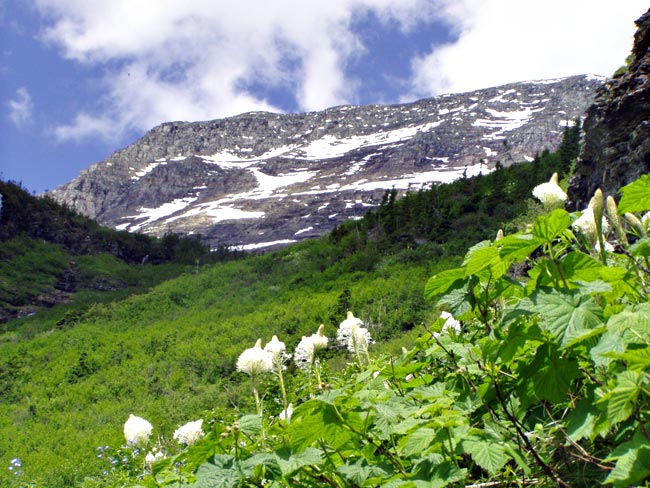During Ancient Warm Period, Glaciers Might Have Persisted

Oddly, glaciers might have existed in the Antarctic during a very warm super-greenhouse era more than 90 million years ago, contrary to researchers’ expectations.
Crocodiles roamed the Arctic and sea surface temperatures in the western tropical Atlantic Ocean reached 98 degrees Fahrenheit (37 Celsius), compared to today's 84 F (29 C) during the extremely warm Turonian stage of the late Cretaceous period.
Researchers have generally assumed that the high temperatures of the Turonian would have kept Earth ice-free. But a new analysis of fossilized plankton, detailed in the Jan. 11 issue of the journal Science, hints that glaciers might have covered portions of Antarctica around 91.2 million years ago, lasting for 200,000 years.
Nature's thermometers
Looking for signs of ancient glaciation can be difficult, because "we have no real physical evidence for glaciation," said study leader Andre Bornemann of the University of Leipzig in Germany. One way to probe the past is to use chemical signatures from tiny plankton called foraminifera that act as a "paleothermometer," recording the effects of sea level and temperature at the time they lived.
The scientists looked at isotopes, which are versions of an element with differing numbers of neutrons. Changes in the amounts of oxygen-16 and oxygen-18 in the foraminifera indicate fluctuations in temperature and sea level that can result from a glaciation event.
"If continental ice sheets are formed, they prefer to incorporate the 16 oxygen, so the lighter species, and so the ocean gets enriched [with] 18 oxygen," Bornemann explained.
Get the world’s most fascinating discoveries delivered straight to your inbox.
Fossilized foraminifera from the Demerara Rise, about 240 miles (380 kilometers) east of Suriname, had higher levels of oxygen-18, which indicated that some kind of glaciation event could have taken place in the Turonian.
Because the change in the amount of oxygen-18 in the water can also be affected by the temperature and salinity of the water, Bornemann and his team looked at other biomarkers that were only affected by these factors, none of which could fully account for the rise in the level of oxygen-18 in the water.
"So we had to assume that this must be related to continental ice sheets," the only other factor that affects oxygen isotope ratios, Bornemann told LiveScience.
Antarctic hothouse ice
The team suspects any glaciers would have formed on Antarctica. While other continents have moved significantly since Turonian times, Antarctica was roughly in its current polar position and has widespread areas of elevated terrain — two things that could have created relative cold conditions.
Just how glaciers formed under such globally warm conditions is not known for sure, but the team suggests that warmer air temperatures could have held more water and accelerated the water cycle, causing more precipitation to fall at the poles. At high elevations, it would have been cold enough for snow to accumulate.
The Turonian hothouse ice sheet would likely have only been about 50 to 60 percent of the size of the current ice sheet, the team estimates, because polar waters would have still been quite warm, and ice unable to form at lower elevations.
Whether or not there were glaciers at other times during the steamy Cretaceous is uncertain.
"Maybe there have been other glaciation events during the Cretaceous, but this … is the one where we have the best proof of," Bornemann said.
The research doesn't suggest that today's glaciers might survive the current period of human-caused global warming, because the ancient periods of warmth took place over thousands of years, whereas things are heating up today in a matter of a century, Bornemann said.
- Video: Goldilocks and the Greenhouse
- Images: Glaciers Before and After
- 101 Amazing Earth Facts

Andrea Thompson is an associate editor at Scientific American, where she covers sustainability, energy and the environment. Prior to that, she was a senior writer covering climate science at Climate Central and a reporter and editor at Live Science, where she primarily covered Earth science and the environment. She holds a graduate degree in science health and environmental reporting from New York University, as well as a bachelor of science and and masters of science in atmospheric chemistry from the Georgia Institute of Technology.


